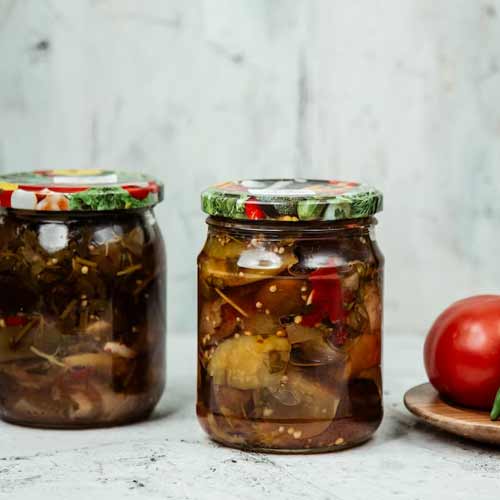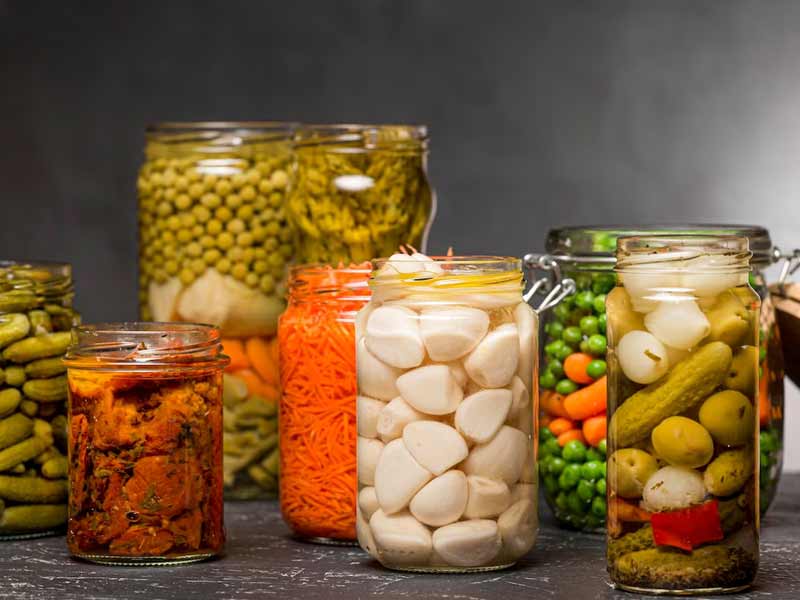Welcome to the world of home canning chicken, where you can transform tender and flavorful poultry into delectable preserved delights that will elevate your meals throughout the year. Whether you’re a seasoned canner or a beginner looking to explore the art of food preservation, this comprehensive guide will provide you with the knowledge, tips, and techniques to successfully can chicken at home. From succulent chicken soups to savory canned chicken breasts, let’s dive into the wonderful world of home canning chicken and discover how it can enhance your culinary experiences.
The Beauty of Home Canning Chicken
Home canning chicken offers numerous benefits, including:
- Flavorful Convenience: Canned chicken provides a convenient and readily available protein source for a variety of dishes, from sandwiches and salads to casseroles and stir-fries.
- Customized Seasoning: When canning chicken at home, you have full control over the seasoning and flavors, allowing you to tailor the canned chicken to your taste preferences.
- Cost Savings: Canning chicken allows you to take advantage of sales or bulk purchases, reducing your overall food expenses.
- Shelf Stability: Properly canned chicken can be stored safely for extended periods, ensuring a supply of chicken even when fresh options are limited.
- Food Security: By canning chicken, you can stock your pantry with nutritious and homemade options, ensuring a sense of food security for you and your family. You can learn Home Canning Chicken.
Equipment and Supplies for Canning Chicken (Home Canning Chicken)

To embark on your home canning chicken journey, you’ll need a few essential equipment and supplies:
- Canning Jars: Choose jars specifically designed for canning, such as Mason jars, in various sizes depending on your needs.
- Canning Lids and Bands: Use new lids for each canning session to ensure a proper seal.
- Pressure Canner: A pressure canner is necessary for safely canning chicken due to its low acid content.
- Jar Lifter: This tool helps to safely remove hot jars from the canner.
- Funnel: A canning funnel assists in filling jars with chicken and broth without creating a mess.
- Bubble Remover and Headspace Tool: These tools help remove air bubbles and measure the proper headspace in the jars.
Preparing Home Canning Chicken
When it comes to Home Canning Chicken, proper preparation is crucial to ensure safety and optimal flavor:
- Selecting Chicken: Choose fresh, high-quality chicken that is free from blemishes, bruises, or excessive fat. Opt for boneless cuts, such as chicken breasts or thighs, as they are easier to can.
- Trim and Clean: Remove any excess fat or skin from the chicken pieces and rinse them thoroughly under cold running water.
- Pre-cooking Options: You can choose to pre-cook the chicken by baking, boiling, or pressure cooking until it reaches a safe internal temperature. Pre-cooking ensures that the chicken is fully cooked during the canning process.
Safety Precautions for Home Canning Chicken

Safety is of utmost importance when canning chicken to prevent the growth of harmful bacteria:
- Follow Tested Recipes: Use trusted and tested recipes from reliable sources, such as the National Center for Home Food Preservation or reputable canning books. These recipes have been developed and tested to ensure safe preservation.
- Maintain Proper Processing Time: Process chicken jars for the recommended time in a pressure canner to achieve the required temperature and pressure necessary for safe canning.
- Monitor Canning Pressure: Ensure that the pressure canner maintains a steady pressure throughout the canning process, following the instructions provided with your specific canner model.
- Inspect Jars for Seals: After the jars have cooled, check the lids for proper seals. A sealed lid should be concave and should not move when pressed.
- Store Properly: Store your home-canned chicken in a cool, dark place away from direct sunlight or extreme temperatures. Use the FIFO (First In, First Out) principle to consume the oldest jars first. You can learn Types of Canning.
Water Bath Canning vs. Pressure Home Canning Chicken
When it comes to Home Canning Chicken, there are two primary methods: water bath canning and pressure canning. You can learn Steam Canning. The method you choose depends on the type of chicken product you wish to can:
- Water Bath Canning: This method is suitable for canning high-acid foods, such as chicken broth or soup that has a pH of 4.6 or lower. The process involves submerging jars in a boiling water bath to kill any potential bacteria.
- Pressure Canning: Low-acid foods, including canned chicken meat, require pressure canning to reach the necessary temperature to eliminate harmful bacteria. Pressure canning involves using a specialized canner that reaches higher temperatures than a water bath canner.
Recipes for Home Canning Chicken
Recipe 1: Canned Chicken Broth
Ingredients:
- Chicken bones and trimmings
- Onion
- Carrots
- Celery
- Garlic
- Bay leaves
- Peppercorns
- Salt
- Water
Instructions:
- Place the chicken bones and trimmings in a large stockpot.
- Add chopped onion, carrots, celery, garlic, bay leaves, peppercorns, and salt.
- Pour in enough water to cover the ingredients.
- Bring the mixture to a boil and then reduce the heat to simmer.
- Cook for several hours, allowing the flavors to develop and the broth to reduce.
- Strain the broth to remove any solids.
- Ladle the hot broth into sterilized jars, leaving the recommended headspace.
- Wipe the jar rims, apply the lids and bands, and tighten until fingertip-tight.
- Process the jars in a pressure canner according to the recommended processing time for your altitude.
- Remove the jars from the canner and let them cool. Check the seals before storing. You can learn Storing Canned Food.
Recipe 2: Canned Chicken Soup
Ingredients:
- Canned chicken (drained)
- Chicken broth (homemade or store-bought)
- Chopped onion
- Chopped carrots
- Chopped celery
- Minced garlic
- Bay leaves
- Dried herbs (such as thyme and rosemary)
- Salt and pepper
Instructions:
- In a large pot, combine the canned chicken, chicken broth, chopped onion, carrots, celery, minced garlic, bay leaves, dried herbs, salt, and pepper.
- Bring the mixture to a boil, then reduce the heat and simmer for about 20 minutes.
- Remove the bay leaves and discard them.
- Ladle the hot soup into sterilizedjars, leaving the recommended headspace.
- Wipe the jar rims, apply the lids and bands, and tighten until fingertip-tight.
- Process the jars in a pressure canner according to the recommended processing time for your altitude.
- Once processed, remove the jars from the canner and let them cool. Check the seals before storing. You can Learn Benefits of Canning.
Recipe 3: Canned Chicken Breast
Ingredients:
- Chicken breasts (cooked and cubed)
- Chicken broth or water
- Salt
Instructions:
- Pre-cook the chicken breasts by baking, boiling, or pressure cooking until fully cooked.
- Cube the cooked chicken breasts into bite-sized pieces.
- Pack the chicken pieces into sterilized jars, leaving the recommended headspace.
- Sprinkle a pinch of salt over the chicken in each jar.
- Fill the jars with hot chicken broth or water, covering the chicken completely.
- Wipe the jar rims, apply the lids and bands, and tighten until fingertip-tight.
- Process the jars in a pressure canner according to the recommended processing time for your altitude.
- Once processed, remove the jars from the canner and let them cool. Check the seals before storing.
Storing and Using Home-Canned Chicken

Proper storage is essential to maintain the quality and safety of your home-canned chicken:
- Store the jars in a cool, dark place away from direct sunlight or extreme temperatures.
- Label each jar with the contents and the date of canning.
- Use the FIFO (First In, First Out) principle to consume the oldest jars first.
- Inspect the jars for signs of spoilage before consuming. If in doubt, discard the contents.
Home-canned chicken can be used in a variety of dishes, including:
- Chicken salads
- Sandwiches and wraps
- Casseroles and pot pies
- Stir-fries and fried rice
- Soups and stews
Experiment with different recipes and flavor combinations to make the most of your home-canned chicken. You can learn Troubleshooting Canning.
FAQs (Frequently Asked Questions) – Home Canning Chicken
- Can I use frozen chicken for canning?
- Yes, you can use frozen chicken for canning. Thaw it thoroughly before cooking or canning.
- How long can home-canned chicken be stored?
- When properly canned and stored, home-canned chicken can be safely stored for up to one year. However, for the best quality, it is recommended to consume it within six to eight months.
- Can I can chicken with bones?
- It is generally recommended to can boneless chicken as bones can affect the heat distribution during the canning process. If you prefer to can chicken with bones, ensure that it is thoroughly cooked and deboned before canning.
- Can I add vegetables or herbs to the canned chicken recipes?
- Yes, you can add vegetables or herbs to the canned chicken recipes to enhance the flavor. However, be mindful of the recommended headspace and processing times to ensure safety.
- Can I reuse canning lids?
- No, it is not recommended to reuse canning lids as they may not provide a proper seal. Always use new lids for each canning session.
- Can I adjust the seasoning in the canned chicken recipes?
- Absolutely! Feel free to customize the seasoning and flavors in the canned chicken recipes according to your taste preferences. Just ensure that the overall acidity and safety guidelines are followed.
Conclusion for Home Canning Chicken
Home canning chicken opens up a world of possibilities for preserving and enjoying this versatile poultry. With the right equipment, proper techniques, and tested recipes, you can confidently embark on your home canning journey. From flavorful chicken broth and hearty soups to tender canned chicken breasts, your pantry will be stocked with delicious homemade options. So gather your supplies, embrace the art of home canning, and elevate your meals with the convenience and flavors of canned chicken.
We proudly present: 1TouchFood, a website specifically designed for online cooking education. Our platform offers a diverse range of culinary tutorials, aimed at teaching aspiring chefs and cooking enthusiasts the art of cooking from the comfort of their own homes. Whether you’re a beginner or an experienced cook looking to expand your culinary repertoire, 1TouchFood provides step-by-step video lessons, interactive recipes, and expert tips to enhance your cooking skills.
Our dedicated team of professional chefs and culinary experts have meticulously crafted each lesson to ensure a seamless and immersive learning experience. Join us on 1TouchFood and unlock your potential in the kitchen as you embark on a culinary journey filled with flavors, techniques, and newfound inspiration.
Please follow us on linkedin. You can learn all best canadian food recipes you can check our Culinary 1TouchFood Youtube and Telegram 1TouchFood page. Don’t forget Fighting Obesity Magazine and Radio Cooking.

